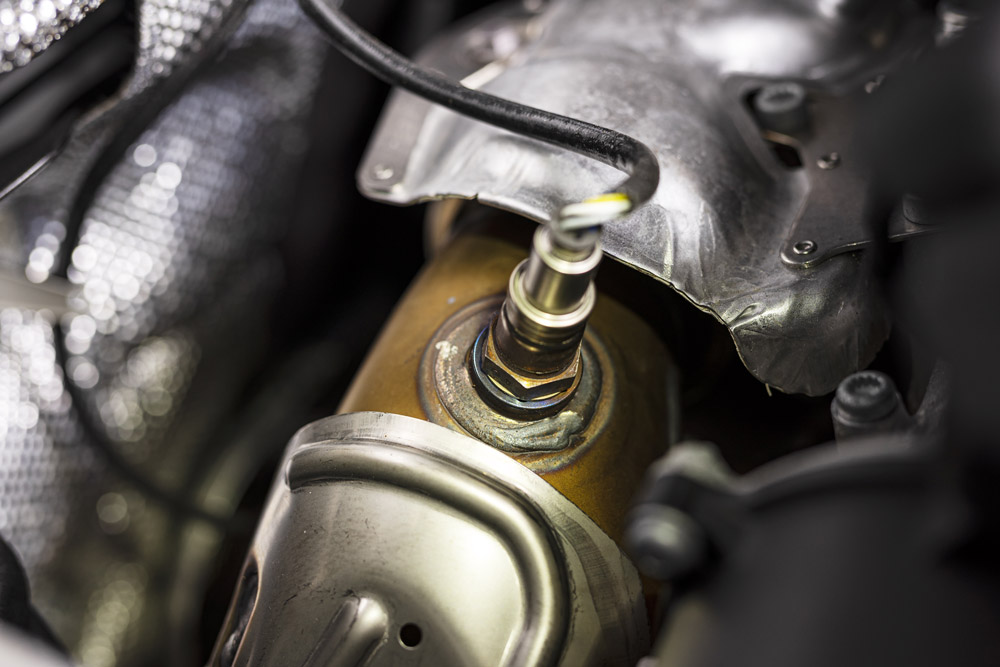
A Miracle of Precision
When you stop to think about it, a car is quite the machine. Like a symphony made up of different instruments, all playing in harmony, your vehicle is a marvel of A-to-B-to-C processes that both work independently and in tandem with one another while also starting, finishing, and starting the loop all over again.
Perhaps there is no better display of this than in your vehicle’s emissions system. From the gas pump to the engine and down through the fuel lines to the exhaust pipe, your liquid fuel changes location, changes form, and even changes molecular structure.
Let’s take a closer look at the emissions process, the servicing of which is the cornerstone of Riverton’s car repair portfolio.
How It Works
Like most of the systems serviced by Master Muffler technicians, your car’s emissions are the result of numerous major components all working together — in truth, there are very few mechanics in an automobile that need only a single part or two to work.
To call your emissions a simple exhaust process is to miss the greater intricacies of the systems at work. Did you know that it’s thanks to your emissions that your exhaust doesn’t fill the atmosphere with pollutants? We mentioned above the changes your fuel goes through from beginning to end; let’s break that process down by parts.
- Exhaust Manifold: Once the fuel/air mixture in your engine’s combustion chamber explodes, it creates exhaust fumes that are pushed out of the engine cylinder through the exhaust manifold.
- Oxygen Sensor: These gasses must pass by the 02 sensor on its way to the catalytic converter, which identifies how much of the exhaust consists of unburnt oxygen. If too much is present, it sends instructions to the carburetor to adjust how much air makes it into the fuel mixture for the next combustion.
- Catalytic Converter: One of the most important pieces in the emissions process, the catalytic converter changes most of the polluted exhaust fumes from carbon monoxide into carbon dioxide, while the rest of the elements turn to water vapor. Despite how crucial this process is for our environment, it didn’t become illegal to remove the catalytic converter from your vehicle until an amendment to the Clean Air Act in 1990.
- Muffler and Resonator: The purpose of these two parts is to dampen and/or change the sound of the engine so as not to hurt the ears of those inside the car or those in the immediate vicinity.
- Tailpipe: The car’s literal backdoor exit for these gasses. The tailpipe is the gateway for the now-treated exhaust to leave the vehicle for good.
Maintaining the Miracle
A system this important and this complex requires knowledgeable technicians to maintain it. Our team at the Master Muffler car repair center in Riverton will ensure that your ride not only remains roadworthy but keeps our environment as free from pollution as possible.
If it has been 10 years since your catalytic converter has been serviced or replaced, it is recommended that you drop by and have it exchanged for a new one.
Related Posts
Key Takeaways On average, passenger vehicle tires last 40,000 to 60,000 miles, depending on type, driving habits, and maintenance. Replace tires when tread depth reaches 2/32”, if damaged, or older than 10 years. Regular rotation, alignment, and proper inflation extend tire life. Aggressive driving, poor roads, and harsh weather shorten tire lifespan. Take advantage [...]
When you think about car maintenance, you probably focus on oil changes, tire rotations, and maybe even brake pad replacement. But what about your brake fluid? If you’ve ever wondered, “What does brake fluid do?” or “Why is brake fluid important?”, you’re not alone. Brake fluid might not be the most talked-about part of [...]
Is that high-pitched squeal from your brakes driving you—and everyone else—crazy? Don’t ignore it. Squeaky brakes aren’t just annoying, they’re your car’s way of saying something needs attention. Whether you're cruising through Salt Lake City or winding up Idaho’s mountain passes, here’s what’s likely going on, how you can fix it, and when it [...]





